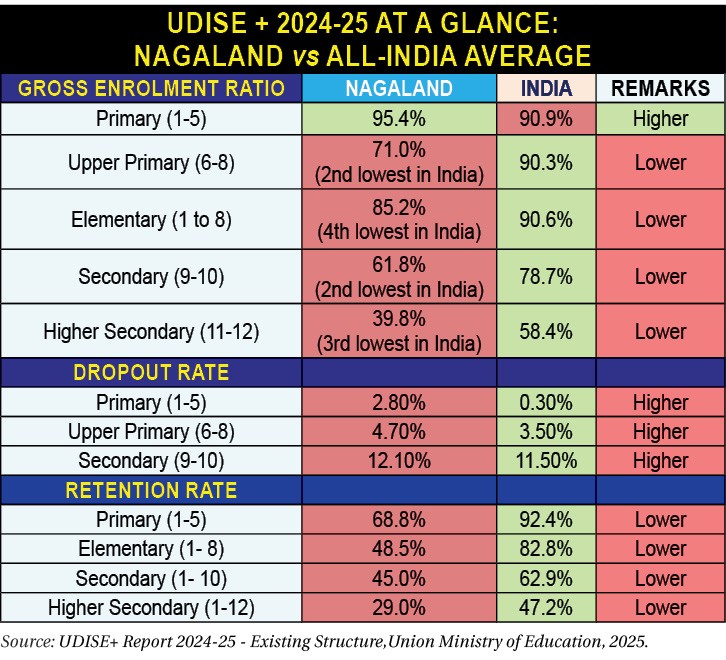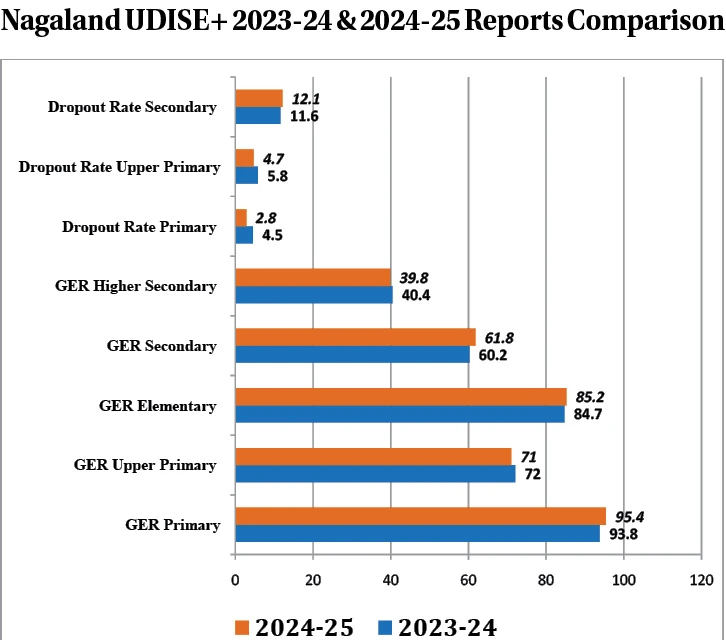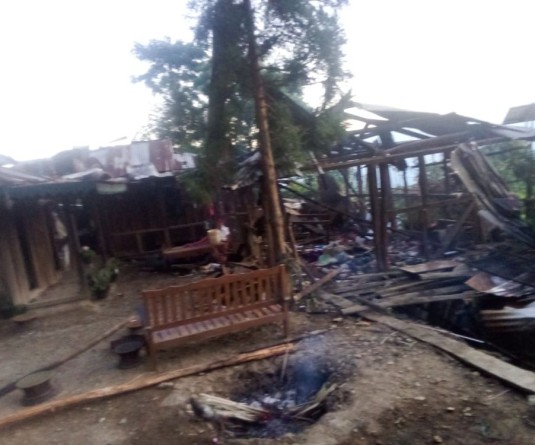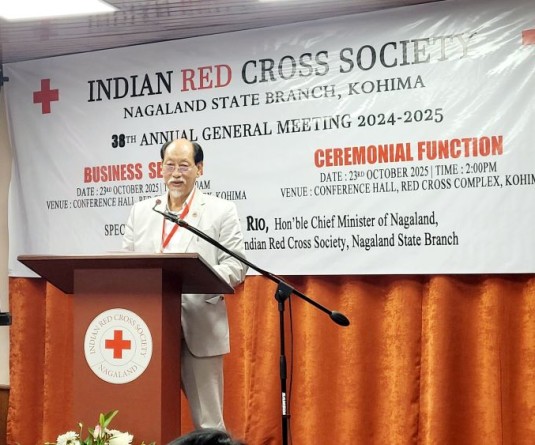
Moa Jamir
Dimapur | September 7
Nagaland continues to perform well in bringing children into school at the entry level but struggles to sustain enrolment and retention beyond the primary stage.
The latest Unified District Information System for Education Plus (UDISE+) 2024–25 data highlighted a familiar pattern: strong participation in the early years, followed by sharp declines in enrolment at middle and higher grades, alongside persistent dropout challenges.
Comparison with the national average and last year’s data also affirms such inferences.
Enrolment gaps with national average
On a positive note, as per the report, Nagaland’s Gross Enrolment Ratio (GER) at the primary stage (Classes 1–5) stood at 95.4%, surpassing the national average of 90.9%.
However, the State’s GER lags behind India in every subsequent stage. GER refers to the total enrolment at a particular level of schooling, regardless of age, expressed as a percentage of the population in the official age group for that level.
At the upper primary stage (Classes 6–8), the GER dropped to 71%, the second lowest in India, compared to the national 90.3%.
Overall, the GER for the elementary stage (Classes 1–8) stood at 85.2%, against the all-India rate of 90.6%, the fourth lowest in the country.
At the secondary stage (Classes 9–10), enrolment saw a steep decline to 61.8%, the second lowest in India and much lower than the national average of 78.7%.
Thereafter, the GER dropped further to 39.8% at the higher secondary stage (Classes 11–12), the third lowest in India, far below the national 58.4%.
The trend illustrates a steep fall in enrolment as students progress through the school system, perhaps underlining structural and socio-economic barriers.
Retention far below benchmark
With GER falling at each stage, retention rates or the share of students expected to progress from the first to the final grade of a level, paint an equally worrying picture.
While India retains 92.4% of students at the primary stage, Nagaland manages just 68.8%.
The gap widens at higher stages.
Only 48.5% of Nagaland’s students complete the elementary cycle (Classes 1–8), while just 45% of the current cohort is expected to finish secondary (Classes 1–10), the report noted.
At the higher secondary stage (Classes 1–12), the retention rate stood at 29%, against the national level of 47.2%. The all-India averages for other levels were much above Nagaland. (See table).
Dropouts higher than national, but some gains
Dropout rates remain higher across all levels in Nagaland. The primary dropout rate was 2.8% against India’s 0.3%; at upper primary it was 4.7% vs 3.5%; and at secondary 12.1% vs 11.5%.
Yet, a year-on-year comparison with 2023–24 shows some positive developments.
Between 2023–24 and 2024–25, dropout rates in Nagaland fell from 4.5% to 2.8% at the primary stage and from 5.8% to 4.7% at upper primary, indicating better early-stage retention.
However, the secondary stage reflected a setback. As reported earlier, in 2023–24, Nagaland’s dropout rate fell sharply from 19.4% in 2022–23 to 11.6%, bringing it below the national average for the first time in recent years.
In 2024–25, the rate inched up again to 12.1%, eroding some of the previous gains, and once more exceeding the national average of 11.5%.
Enrolment at this level improved modestly, from 60.2% in 2023–24 to 61.8% in 2024–25, but the State remains far behind the national figure of 78.7%.
At the higher secondary stage, the situation worsened. Nagaland’s GER declined slightly from 40.4% in 2023–24 to 39.8% in 2024–25, cementing its position among the lowest in the country. Data also show a lower GER for upper primary in 2024–25 at 71%, against 72% in 2023–24.
Thus, transition to higher levels remains the weakest link in the State’s education profile.
It was not all negative outlooks though. As reported earlier, for the first time in an academic year, Nagaland eliminated schools with zero enrolments and single-teacher institutions.







